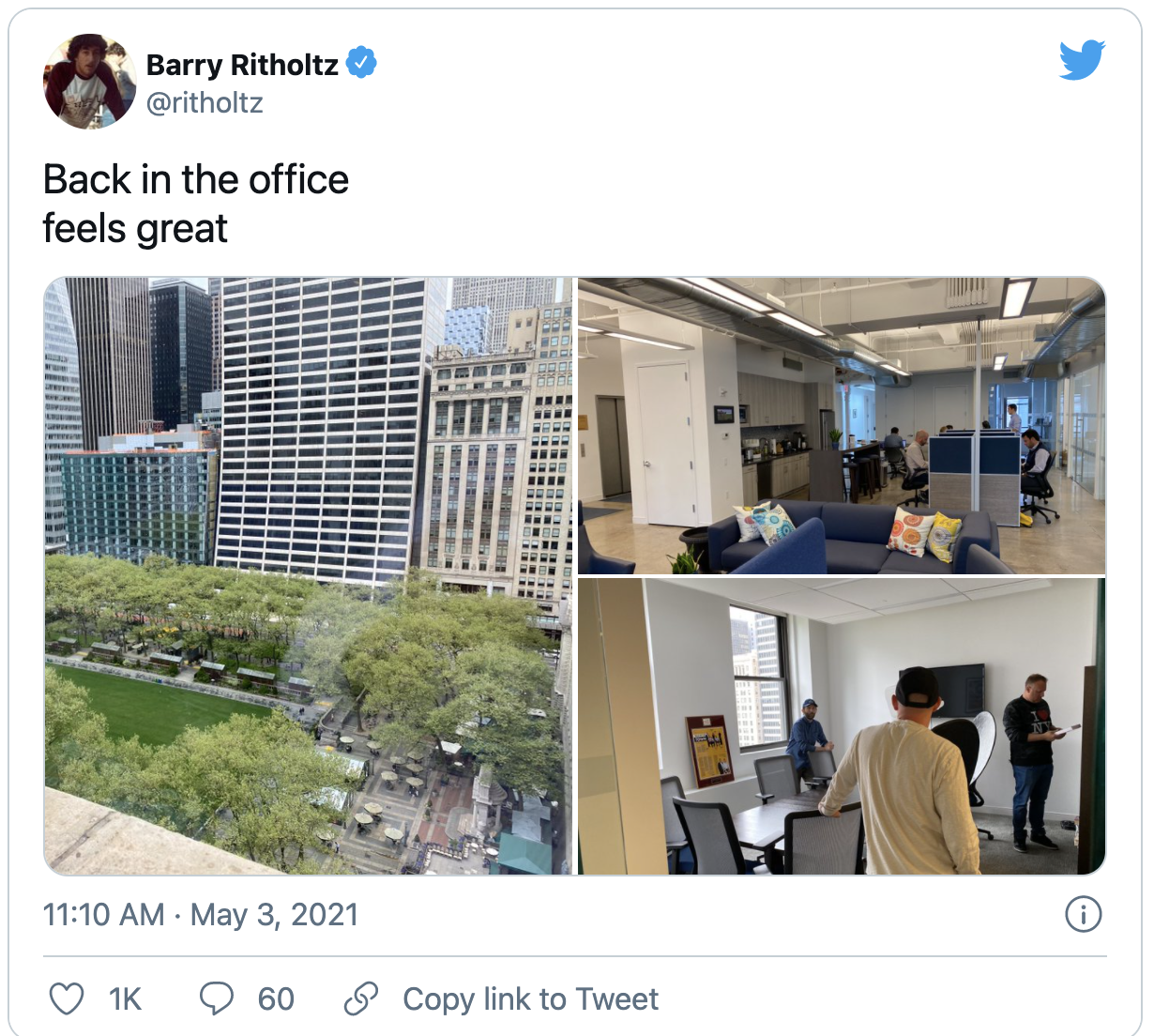So, we were back in the office yesterday (officially) for the first time as a group in a year. We (unofficially) re-opened the office last May/June for the people who live close enough to the office to walk to work from their WFH/lockdown apartments. It was usually just a few people.
But I’m intrigued by what the world will look like post-pandemic: numerous pre-existing trends were accelerated by the pandemic: Remote work, Geographic Labor Arbitrage, Virtual Desktop Sharing, Zoom Calls, FaceTime, etc. These have existed for years or decades, but were not staples at many organizations (they were at ours). Now, we have demonstrated proof of concept to a huge swath of corporate America that there is no requirement all of your staff must assemble in an expensive office building Monday to Friday 9-5.
The result is a rough estimate that approximately 20% of corporate office space today may be excess. This has deep ramifications for commercial real estate and REIT’s and other properties that were previously believed to be steady investments, with reliable cash flows.
For expensive cities, this excess commercial space creates the potential for conversions to residential real estate. The biggest impediment cities have had in attracting more young, creative workers to urban environs has been issues of affordability, driven primarily by housing. It’s been a seller’s market for a long time; urban residential buyers/renters seem to have (finally) gained the upper hand. If much of the excess office space footage ends up becoming converted to residential, its potentially hundreds of thousands of units of residential urban real estate hitting the market over the next few years.
I have questions:
How does this affect how companies organize themselves?
How do you communicate your company’s objectives and methods and philosophy to your employees?
How do you hire, train, supervise, evaluate, promote, retain and/or fire employees?
How do you maintain a corporate culture if people are only in a few times a week or month?
The present concern over the technological dominance in various equity indices may end up paling in comparison to what happens next. All of the various makeshift remote contingencies that were done on the fly during the early days of WFH pandemic lockdown may become permanent, or even expanded. We have become completely reliant on technology, ranging from hardware to software to connectivity. Those who are concerned that “Big Tech” is TOO BIG now may be shocked at how big Big Tech becomes five or ten years hence.
How we spend most of our time in offices is going to change. Why do you have to be physically located in a specific place, only to do those things you could just as easily do in front of a screen from anywhere? What’s going to matter most for the office are collaboration, projects requiring multiple skill sets from very different people working towards the same common goal.
It’s not so much that work is going to change, but rather, the emphasis on what we do where will shift. The efficiency improvements from having individual work done separately, while collaborative work is done together is potentially a huge cost saver. The idea that you all have to sit in a specific building, in an office on this street in this city at this time, seems quaint and even a little silly.
The office will be where we go to do the sorts of things that we can ONLY DO WITH OTHERS TOGETHER: Imagining new products, creating a corporate culture, making certain decisions, hiring and training workers — the tasks we have seen first hand over the past year that are best done in person.
Change is coming, how fast companies adopt to it will determine whether how well they succeed — or not.
UPDATE: MAY 12 2021
I like Seth Godin’s take.
Previously:
Jonathan Miller Explains Post Pandemic Real Estate
The 75% Point: Light at the End of the Tunnel (March 11, 2021)


